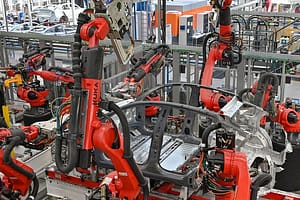For companies in all sectors, inventory management software is essential for optimising processes and ensuring stock levels correspond with customer demand. Knowing which features will best meet your company’s demands is essential to selecting the ideal software. Below are the key components that any inventory management system should include to improve productivity, precision, and scalability.
Real-time inventory tracking
One essential element that enables firms to check inventory levels across various locations is real-time tracking. This lowers the possibility of overstocking or understocking by guaranteeing that stock numbers are constantly current. It also gives management insight into inventory movement, enabling them to spot patterns and maximise stock levels. Better decision-making is also made possible by real-time data, especially when reacting to abrupt shifts in consumer demand or supply chain interruptions.
Integration with existing systems
Point-of-sale (POS) platforms, accounting software, and enterprise resource planning (ERP) systems should easily interface with inventory management software. That integration optimises data flow by reducing errors and doing away with manual data entry. Centralising operations allows companies to see their processes—from sales to procurement—in a more comprehensive way.
Customisable reporting and analytics
Strong reporting features are essential in inventory management software since data is a potent tool for decision-making. The software should offer customisable reports on important variables including supplier performance, stock aging, and inventory turnover. Managers can find opportunities for improvement by using analytics dashboards, which can provide visual insights into patterns. Strategies to lower carrying costs, enhance reordering procedures, and raise supply chain efficiency generally can be influenced by these insights.
Inventory categorisation and organisation
Effective inventory management requires proper categorisation. Product classification by attributes like size, color, and SKU should be supported by the software. It should also support hierarchical organisation, which would let companies classify related products under more general headings. Businesses can keep accurate records and make searches easier with this function, especially when working with big product catalogs.
Automated reordering
One revolutionary feature that reduces manual intervention and guarantees stock availability is automated reordering. Businesses should be able to create reorder points using pre-established criteria in the system, which will automatically initiate purchase orders when stock levels fall below a predetermined threshold. This function lowers the possibility of stockouts and gives managers more time to work on strategic projects. When producing reorder recommendations, sophisticated algorithms can additionally take lead times and supplier dependability into account.
Scalability
Businesses’ needs for inventory management get increasingly complicated as they expand. Software must be scalable to handle growing users, locations, and inventories without sacrificing functionality. Whether implementing new technology, entering new markets, or integrating e-commerce platforms, the system should be adaptable enough to accommodate new business models.
User-friendly interface
To guarantee that staff members can utilise the software efficiently, an intuitive and user-friendly interface is essential. The advantages of automation can be outweighed by faults and inefficiency caused by complicated or badly built systems. The best examples or free trial of such a software should reveal that it allows easy data entry and intuitive navigation. Employee training should be simple to reduce downtime and facilitate a seamless transition.
Cost management features
Because carrying costs for inventory can have a big impact on profitability, cost control is crucial. Information about shrinkage, obsolete inventory, and carrying costs should be included in the software. Businesses can put plans in place to cut excess inventory, boost turnover rates, and boost profitability by identifying high-cost regions. Features for tracking costs also help with financial planning and budgeting.
Conclusion
Businesses can choose inventory management software that boosts productivity, lowers expenses, and fosters long-term success by concentrating on five crucial qualities. Software becomes a beneficial asset rather than a burdensome tool when you prioritise features corresponding to your operational needs.






Leave a Comment